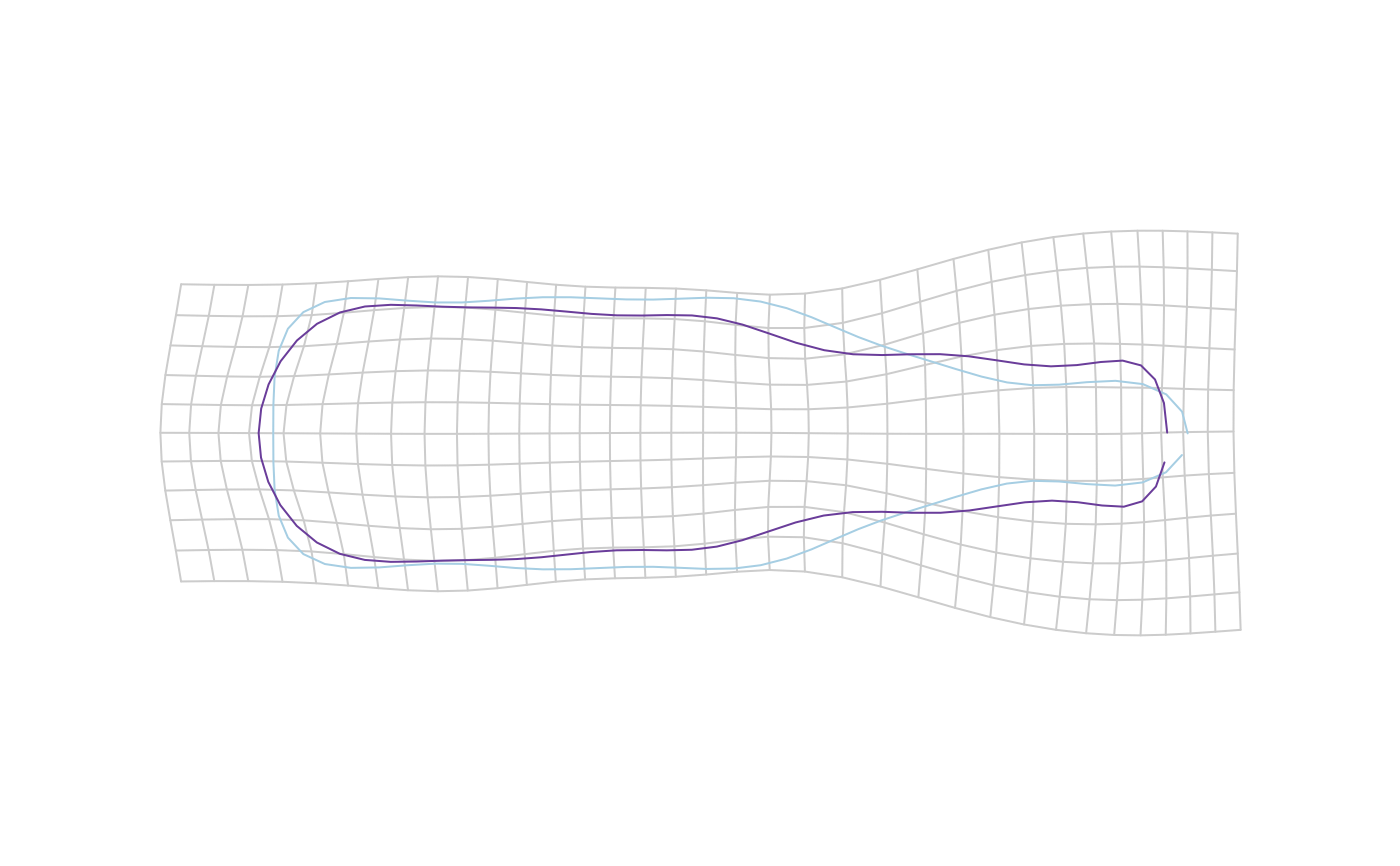tps_grid calculates and plots deformation grids between two
configurations.
Arguments
- fr
the reference \((x; y)\) coordinates
- to
the target \((x; y)\) coordinates
- amp
an amplification factor of differences between
frandto- over
numericthat indicates how much the thin plate splines extends over the shapes- grid.size
numericto specify the number of grid cells on the longer axis on the outlines- grid.col
color for drawing the grid
- poly
whether to draw polygons (for outlines) or points (for landmarks)
- shp
logical. Whether to draw shapes- shp.col
Two colors for filling the shapes
- shp.border
Two colors for drawing the borders
- shp.lwd
Two
lwdfor drawing shapes- shp.lty
Two
ltyfro drawing the shapes- legend
logical whether to plot a legend
- legend.text
some text for the legend
- ...
additional arguments to feed coo_draw
